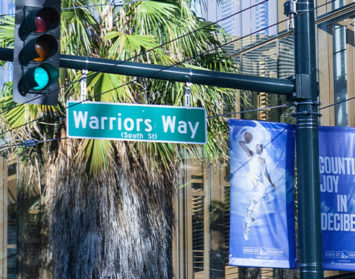With all the attention being centered on the future of downtown San Diego’s real estate market in recent months, nobody’s been paying much attention to what’s happening — or not happening — in some of the region’s suburban office markets. Those of us interested in the future of our region’s economy would do well to begin doing so. Right away.
Aside from being called other names from time to time, those of us in commercial real estate are sometimes referred to as the “canary in the coal mine.” What happens in our business of selling and leasing office and industrial properties typically happens soon thereafter in other economic sectors. We’re the ones working hands-on with corporate tenants who are either ramping up their spaces in anticipation of hiring, producing products and generating revenues — or the inverse. If that’s the case, then we’re in for some very tough economic sledding in our regional economy in the near future.
Simply put, the office market in several suburban areas of our region is in a meltdown mode. The amount of vacant and available space has mushroomed in 2001 and what once was a vibrant part of our economy is fast becoming no more.
CoStar, which is a type of multiple listing service for the commercial real estate market, lists properties that are either presently “vacant” or soon to be in the next few months. Vacant properties are listed as such and then are included along with properties that are scheduled to be vacant within the next six months to be collectively listed as “available.”
Even if we discount some of the numbers that follow as being over-stated and not always current, the trend in vacant and available space is nothing short of alarming.
Take the once bustling Sorrento Mesa area where there is a total of 3.5 million square feet in 55 office and “flex” buildings either existing or soon to be completed. A year ago, the vacancy rate was in single digits. Today, there is a 37.26 percent vacancy rate — space that’s presently unoccupied. That’s bad enough, but when you add to that vacancy rate the space that is due to come onto the market in the next few months, the rate soars to 52.4 percent. These numbers include the 1.8 million square feet of space that either was or is being directly leased or subleased by users desperately trying to shed space that’s unnecessary because of a worsening economy. In this area, you can literaly see and feel the vacancy rate. The 120,000-square-foot SeaView Corporate Center and the slightly larger Sorrento Tower South office complex, both newly completed, have sat unoccupied for months.
It gets worse in North County. In Carlsbad, 41.5 percent of the area’s 3.5 million square feet in 96 buildings is now vacant. Add to that upcoming availability in space and we are looking at total availability rate of 58.4 percent. In other words, more than 2 million square feet either is or soon will be vacant in an area that 18 months ago experienced vacancy rates under 10 percent.
Lest anyone think these are isolated examples: The Del Mar area — which in early 2000 enjoyed a 99.9 percent occupancy rate — today has a vacancy rate of 20.6 percent. Available space for the area’s 25 office and flex buildings jumps to 31.7 percent of the total inventory of 1.4 million square feet.
It’s a little better — but not much — in the University Town Center and so-called Golden Triangle area. Office space vacancies comprise 13 percent of the total 3.27 million square feet that is housed in 33 buildings. Some of the more notable vacant space in this sub market includes three buildings, totaling 185,000 square feet, which Gateway Corp. is trying to sublease. When one looks at the space that is coming on line in the near future, the vacancy rate reaches 25.3 percent.
Many of us believe the vacancy trend will continue to worsen in these and other suburban office and R&D markets as landlords and tenants who are in trouble try to hold out for what had been the market rates for these spaces. Folks, it ain’t gonna happen. There’s virtually no demand for office and flex space by the technology and telecommunications companies who are these region’s traditional occupants. Those who a year ago might have been interested in expanding their existing spaces or relocating to larger premises are downsizing and departing their existing spaces today.
These kind of numbers tend to influence the attitude of the region’s overall commercial real estate market and even the economy itself. Even though downtown San Diego is still experiencing high occupancy rates, nothing’s a sure thing if what’s happening in the suburbs spreads and begins to impact other economic sectors.
My counsel to these users is to think and act like a winner by recognizing the new market realities. Cut your losses by getting your spaces rented at whatever rate you can get and move on to fight and win another day.
Trying to hold out for rates that nobody can or will pay is simply delaying the inevitable. Kenny Rogers gave the best real estate advice today in his ballad “The Gambler:”
“You got to know when to hold ’em, know when to fold ’em. Know when to walk away, know when to run.”
Jason Hughes is founder of Hughes Marino, an award-winning commercial real estate company with offices across the nation. A pioneer in the field of tenant representation, Jason has exclusively represented tenants and buyers for more than 30 years. Contact Jason at 1-844-662-6635 or jason@hughesmarino.com to learn more.









